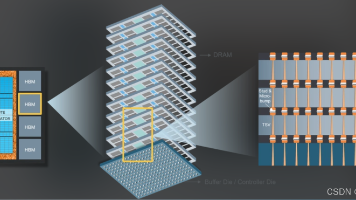人工智能·深度学习·标签与分类:系统解析与实践指南
深度学习中的标签与分类是一个复杂而重要的主题。通过合理的标签设计、选择适当的模型架构、采用正确的评估指标,并结合实践经验,我们可以构建出高效可靠的分类系统。随着技术的发展,这个领域还将不断演进,产生新的方法和应用。
·
人工智能·深度学习·标签与分类:系统解析与实践指南
一、基础概念
1.1 标签的本质
标签是对数据的语义标注,在机器学习中具有核心地位:
# 标签示例
class DataLabel:
def __init__(self):
# 基础标签类型
self.binary_label = 0 # 二分类
self.multi_class = 2 # 多分类
self.multi_label = [1, 0, 1] # 多标签
self.hierarchical = {'level1': 'animal', 'level2': 'mammal', 'level3': 'cat'} # 层次标签
def get_label_type(self):
if isinstance(self.label, bool) or self.label in [0, 1]:
return 'binary'
elif isinstance(self.label, list):
return 'multi_label'
elif isinstance(self.label, dict):
return 'hierarchical'
else:
return 'multi_class'
1.2 分类任务类型
二、深度学习中的分类模型
2.1 基础分类器
class DeepClassifier(nn.Module):
def __init__(self, input_dim, hidden_dim, num_classes):
super(DeepClassifier, self).__init__()
self.feature_extractor = nn.Sequential(
nn.Linear(input_dim, hidden_dim),
nn.ReLU(),
nn.BatchNorm1d(hidden_dim),
nn.Dropout(0.5),
nn.Linear(hidden_dim, hidden_dim//2),
nn.ReLU()
)
self.classifier = nn.Linear(hidden_dim//2, num_classes)
def forward(self, x):
features = self.feature_extractor(x)
logits = self.classifier(features)
return logits
2.2 多标签分类器
class MultiLabelClassifier(nn.Module):
def __init__(self, input_dim, hidden_dim, num_labels):
super(MultiLabelClassifier, self).__init__()
self.backbone = nn.Sequential(
nn.Linear(input_dim, hidden_dim),
nn.ReLU(),
nn.BatchNorm1d(hidden_dim),
nn.Dropout(0.5)
)
self.label_classifiers = nn.ModuleList([
nn.Linear(hidden_dim, 2) for _ in range(num_labels)
])
def forward(self, x):
features = self.backbone(x)
return [classifier(features) for classifier in self.label_classifiers]
2.3 层次分类器
class HierarchicalClassifier(nn.Module):
def __init__(self, input_dim, hidden_dims, level_classes):
super(HierarchicalClassifier, self).__init__()
self.shared_backbone = nn.Sequential(
nn.Linear(input_dim, hidden_dims[0]),
nn.ReLU(),
nn.BatchNorm1d(hidden_dims[0])
)
self.level_classifiers = nn.ModuleList([
nn.Sequential(
nn.Linear(hidden_dims[i], hidden_dims[i+1]),
nn.ReLU(),
nn.Linear(hidden_dims[i+1], num_classes)
) for i, num_classes in enumerate(level_classes)
])
def forward(self, x):
shared_features = self.shared_backbone(x)
return [classifier(shared_features) for classifier in self.level_classifiers]
三、标签处理技术
3.1 标签编码
class LabelEncoder:
def __init__(self):
self.label2id = {}
self.id2label = {}
def fit(self, labels):
unique_labels = sorted(set(labels))
self.label2id = {label: idx for idx, label in enumerate(unique_labels)}
self.id2label = {idx: label for label, idx in self.label2id.items()}
def transform(self, labels):
return [self.label2id[label] for label in labels]
def inverse_transform(self, indices):
return [self.id2label[idx] for idx in indices]
3.2 标签平滑
def label_smoothing(one_hot_labels, smoothing=0.1):
"""
标签平滑技术实现
"""
confidence = 1.0 - smoothing
smoothing_value = smoothing / (one_hot_labels.shape[-1] - 1)
smoothed_labels = one_hot_labels * confidence + smoothing_value
return smoothed_labels
四、评估指标
4.1 分类评估
class ClassificationMetrics:
def __init__(self):
self.reset()
def reset(self):
self.true_positives = 0
self.false_positives = 0
self.false_negatives = 0
self.true_negatives = 0
def update(self, predictions, targets):
self.true_positives += ((predictions == 1) & (targets == 1)).sum()
self.false_positives += ((predictions == 1) & (targets == 0)).sum()
self.false_negatives += ((predictions == 0) & (targets == 1)).sum()
self.true_negatives += ((predictions == 0) & (targets == 0)).sum()
def get_metrics(self):
precision = self.true_positives / (self.true_positives + self.false_positives)
recall = self.true_positives / (self.true_positives + self.false_negatives)
f1 = 2 * (precision * recall) / (precision + recall)
accuracy = (self.true_positives + self.true_negatives) / (self.true_positives + self.false_positives + self.false_negatives + self.true_negatives)
return {
'precision': precision,
'recall': recall,
'f1': f1,
'accuracy': accuracy
}
4.2 多标签评估
def multi_label_metrics(predictions, targets):
"""
计算多标签分类的评估指标
"""
sample_f1_scores = []
sample_precision_scores = []
sample_recall_scores = []
for pred, target in zip(predictions, targets):
intersection = np.sum((pred == 1) & (target == 1))
pred_positives = np.sum(pred == 1)
target_positives = np.sum(target == 1)
precision = intersection / pred_positives if pred_positives > 0 else 0
recall = intersection / target_positives if target_positives > 0 else 0
f1 = 2 * precision * recall / (precision + recall) if (precision + recall) > 0 else 0
sample_precision_scores.append(precision)
sample_recall_scores.append(recall)
sample_f1_scores.append(f1)
return {
'micro_f1': np.mean(sample_f1_scores),
'micro_precision': np.mean(sample_precision_scores),
'micro_recall': np.mean(sample_recall_scores)
}
五、实践技巧
5.1 数据增强
class DataAugmentation:
def __init__(self):
self.transforms = A.Compose([
A.RandomRotate90(),
A.Flip(),
A.Transpose(),
A.OneOf([
A.IAAAdditiveGaussianNoise(),
A.GaussNoise(),
], p=0.2),
A.OneOf([
A.MotionBlur(p=.2),
A.MedianBlur(blur_limit=3, p=0.1),
A.Blur(blur_limit=3, p=0.1),
], p=0.2),
A.ShiftScaleRotate(shift_limit=0.0625, scale_limit=0.2, rotate_limit=45, p=0.2),
A.OneOf([
A.OpticalDistortion(p=0.3),
A.GridDistortion(p=.1),
A.IAAPiecewiseAffine(p=0.3),
], p=0.2)
])
def __call__(self, image):
return self.transforms(image=image)['image']
5.2 损失函数选择
class LossFactory:
@staticmethod
def get_loss(task_type):
if task_type == 'binary':
return nn.BCEWithLogitsLoss()
elif task_type == 'multi_class':
return nn.CrossEntropyLoss()
elif task_type == 'multi_label':
return nn.BCEWithLogitsLoss(reduction='sum')
elif task_type == 'hierarchical':
return nn.CrossEntropyLoss(ignore_index=-1)
else:
raise ValueError(f"Unsupported task type: {task_type}")
六、高级主题
6.1 不平衡数据处理
class ImbalanceHandler:
def __init__(self, strategy='weighted'):
self.strategy = strategy
def compute_class_weights(self, labels):
"""计算类别权重"""
class_counts = np.bincount(labels)
total_samples = len(labels)
weights = total_samples / (len(class_counts) * class_counts)
return torch.FloatTensor(weights)
def get_sampler(self, dataset):
"""获取采样器"""
if self.strategy == 'weighted':
weights = self.compute_class_weights(dataset.labels)
return WeightedRandomSampler(weights, len(weights))
elif self.strategy == 'under':
return RandomUnderSampler()
elif self.strategy == 'over':
return RandomOverSampler()
else:
return None
6.2 集成学习
class EnsembleClassifier:
def __init__(self, models, weights=None):
self.models = models
self.weights = weights if weights is not None else [1/len(models)] * len(models)
def predict(self, x):
predictions = []
for model, weight in zip(self.models, self.weights):
pred = model(x)
predictions.append(weight * pred)
return sum(predictions)
七、应用案例
7.1 图像分类
class ImageClassificationSystem:
def __init__(self, model, transforms, device):
self.model = model.to(device)
self.transforms = transforms
self.device = device
def train_epoch(self, dataloader, criterion, optimizer):
self.model.train()
total_loss = 0
for images, labels in dataloader:
images = images.to(self.device)
labels = labels.to(self.device)
optimizer.zero_grad()
outputs = self.model(images)
loss = criterion(outputs, labels)
loss.backward()
optimizer.step()
total_loss += loss.item()
return total_loss / len(dataloader)
def evaluate(self, dataloader):
self.model.eval()
predictions = []
targets = []
with torch.no_grad():
for images, labels in dataloader:
images = images.to(self.device)
outputs = self.model(images)
predictions.extend(outputs.argmax(dim=1).cpu().numpy())
targets.extend(labels.numpy())
return classification_report(targets, predictions)
7.2 文本分类
class TextClassifier:
def __init__(self, vocab_size, embedding_dim, num_classes):
self.embedding = nn.Embedding(vocab_size, embedding_dim)
self.encoder = nn.TransformerEncoderLayer(
d_model=embedding_dim,
nhead=8
)
self.classifier = nn.Linear(embedding_dim, num_classes)
def forward(self, text, attention_mask):
embedded = self.embedding(text)
encoded = self.encoder(embedded, src_key_padding_mask=attention_mask)
pooled = encoded.mean(dim=1)
return self.classifier(pooled)
八、未来趋势
8.1 新兴方向
- 小样本学习
- 自动标注
- 主动学习
- 弱监督学习
8.2 技术展望
- 模型轻量化
- 可解释性增强
- 领域自适应
- 终身学习
总结
深度学习中的标签与分类是一个复杂而重要的主题。通过合理的标签设计、选择适当的模型架构、采用正确的评估指标,并结合实践经验,我们可以构建出高效可靠的分类系统。随着技术的发展,这个领域还将不断演进,产生新的方法和应用。
更多推荐
 已为社区贡献2条内容
已为社区贡献2条内容









所有评论(0)